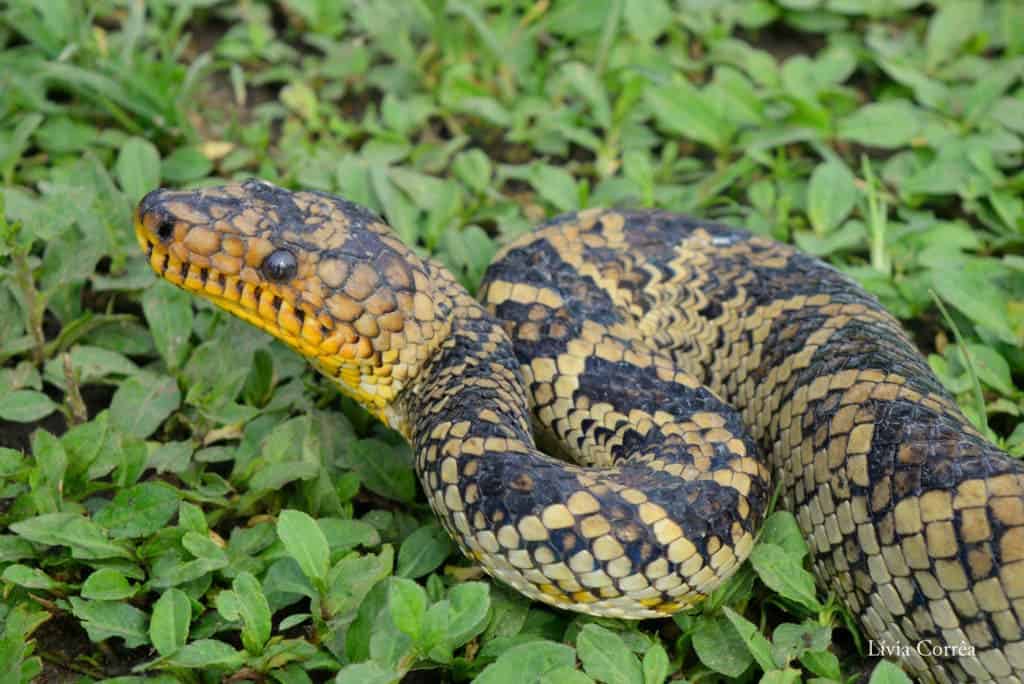An extremely elusive Brazilian tree boa has been seen by scientists for the first time since its discovery in 1953.

Cropan’s boa (Corallus cropanii) inhabits a forest range in Brazil, and scientists recently glimpsed the first living specimen seen since 1953.
Credit: Lívia Corrêa/Instituto Butantan
Snakes aren’t very popular with humans, for some pretty basic reasons. Some of them can be dangerous and even those which aren’t are still an unpleasant sight for most people. But scientists were thrilled to see this beautiful 5.5-foot-long female in Ribeira Valley — the first specimen ever found in over half a century.
Robert Henderson, curator emeritus of herpetology at the Milwaukee Public Museum, says “this is an amazing find. Just phenomenal.”
When farmers in the area see a snake, they just kill it. This happens in many parts of the world, and researchers can’t usually really rely on locals to give them valuable information, so we don’t really know just how rare this creature is. However, we do know it is rare, covering a range of only 300 square km (115 square km), at an elevation of 40 to 45 meters, but it’s hard to say how many individuals still exist.
It’s probably the rarest boa (and possibly the world’s rarest snake) in the world. The nonvenomous species was first discovered in 1953, with only three to six specimens collected. Since then, researchers have received several killed specimens, but there’s only so much non-living creatures can teach us. So biologists started spreading the word to locals. They started giving talks about the snake, how it’s not really dangerous for humans, teaching them how to identify and capture it… and it worked!
It didn’t take very long before they actually found one. After studying it and before releasing it, biologists implanted a small radio to learn more about species’ longevity and mating habits.
“The snake will be studied in order to discover more information about its biology and habits. As it has never been observed in nature, we do not have much information about its behavior,” Livia Corrêa, a biologist at the Butantan Institute, told Carta de Notícias. “It will be released in its natural habitat and receive equipment with radiotelemetry that will enable its tracking in nature and the transmission of information to researchers,” she said.
At the moment, there are no conservation measures being taken for this snake… because we don’t really know what the deal with it is. The IUCN lists it as ‘endangered’ but the situation could be much direr.
“There are no known species-specific conservation measures in place.” the IUCN writes. “Conservation measures, such as area management, are required to reduce the rate of habitat loss occurring in the Atlantic Forest. Further research is required to assess and monitor the population of this species, due to its restricted range and presumed small population size.”









